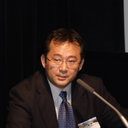Low bioavailability of dietary epoxyxanthophylls in humans.
Atslēgvārdi
Abstrakts
Epoxyxanthophylls (epoxide-containing xanthophylls), a group of carotenoids, are ubiquitously distributed in edible plants. Among them, neoxanthin in green leafy vegetables and fucoxanthin in brown algae have been reported to exhibit an antiproliferative effect on several human cancer cells in vitro. However, there is little information about the intestinal absorption and metabolic fate of dietary epoxyxanthophylls in humans. To estimate the intestinal absorption of neoxanthin and fucoxanthin in humans, we evaluated the plasma epoxyxanthophyll concentrations before and after 1-week dietary interventions with spinach (Spinacia oleracea) and wakame (Undaria pinnatifida). The epoxyxanthophylls and their metabolites in the plasma extracts were determined by HPLC after partial purification and concentration with solid-phase extraction cartridges. Even after 1 week of spinach intake (3.0 mg neoxanthin/d), the plasma concentrations of neoxanthin and its metabolites (neochrome stereoisomers) remained very low (about 1 nmol/l), whereas those of beta-carotene and lutein were markedly increased. Similarly, the plasma concentration of fucoxanthinol, a gastrointestinal metabolite of fucoxanthin, was < 1 nmol/l after 1 week of wakame intake (6.1 mg fucoxanthin/d). These results indicated that the plasma response to dietary epoxyxanthophylls was very low in humans even after 1-week intake of epoxyxanthophyll-rich diets.


